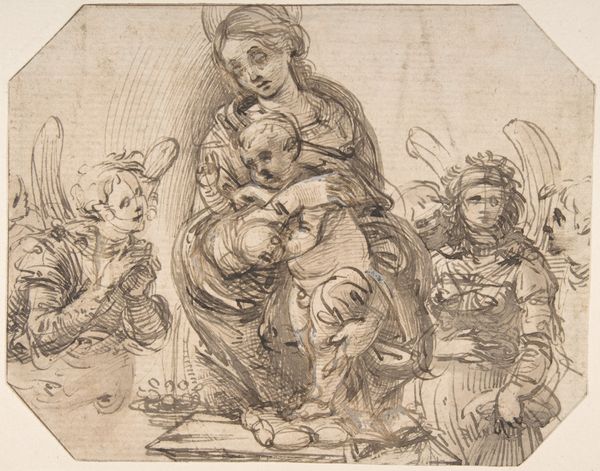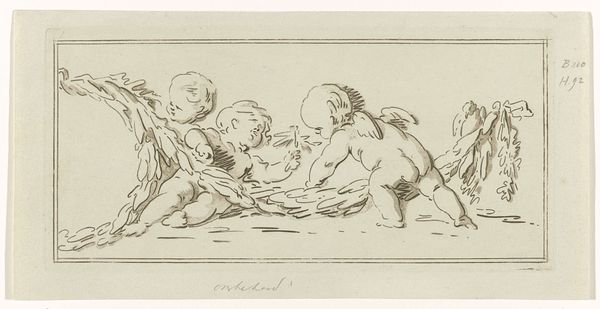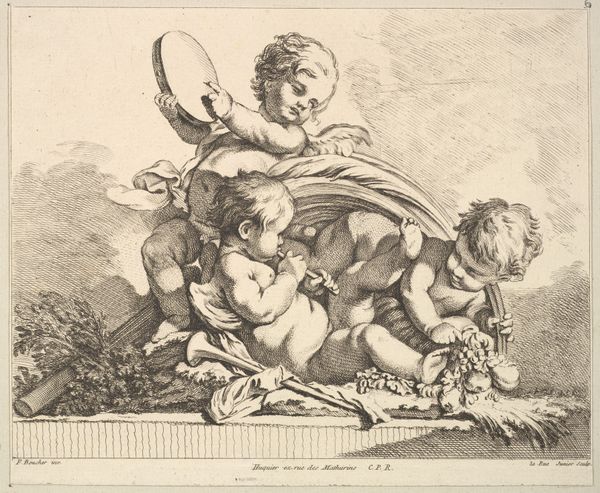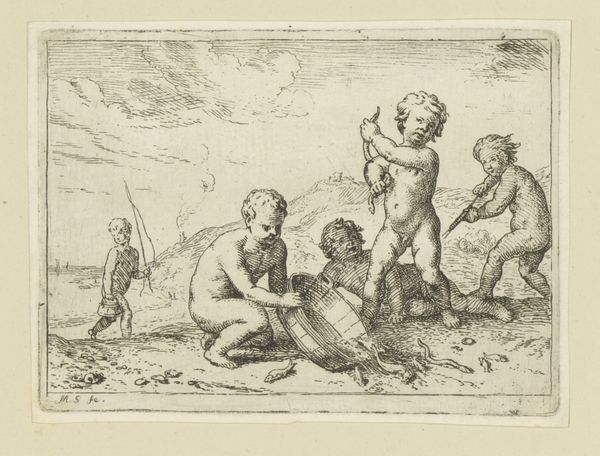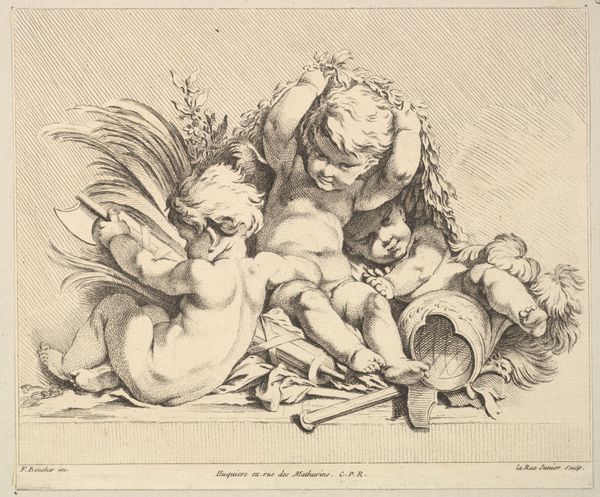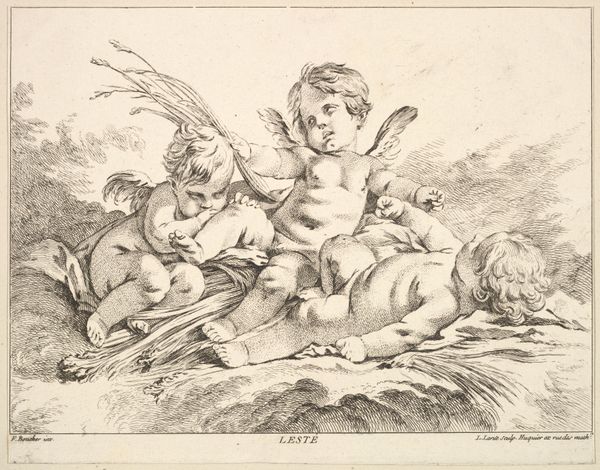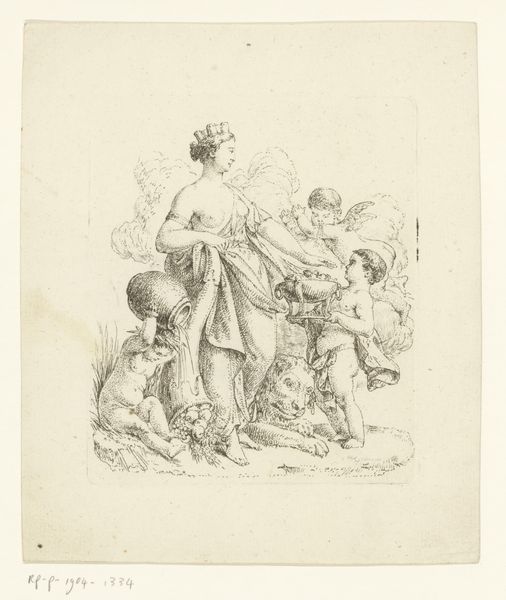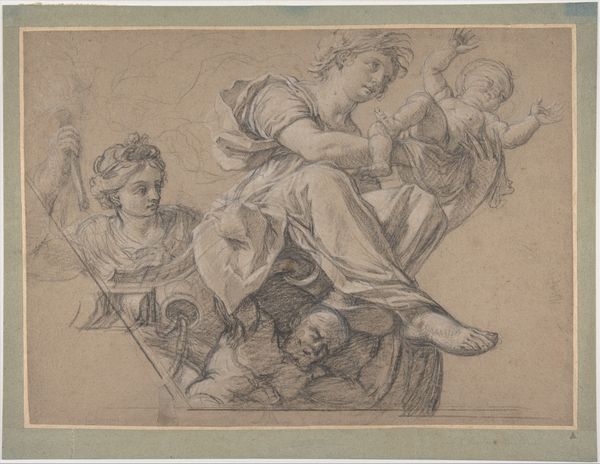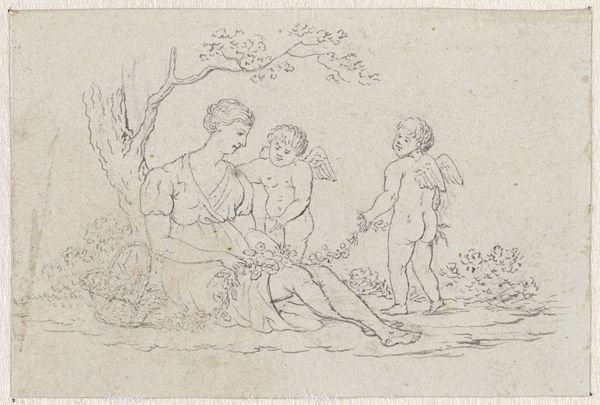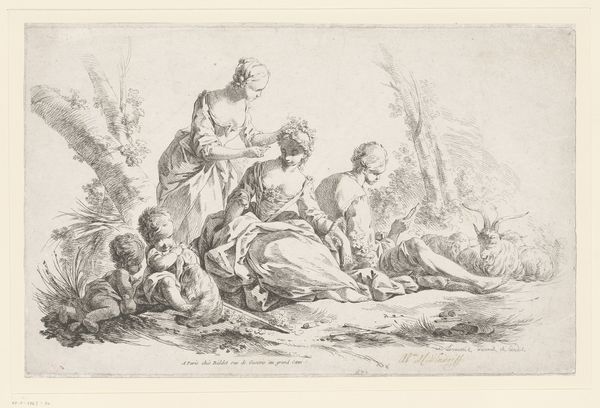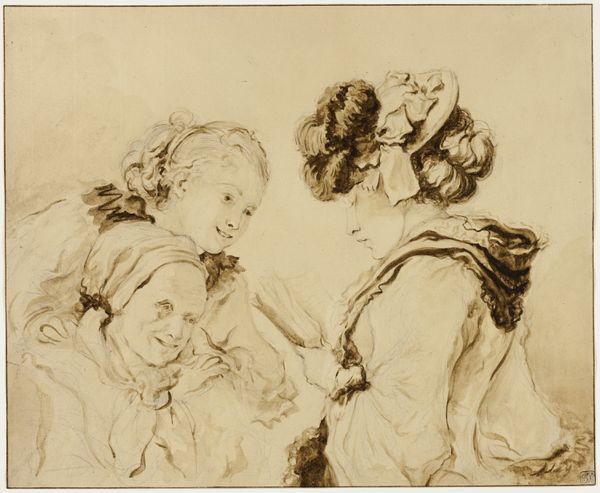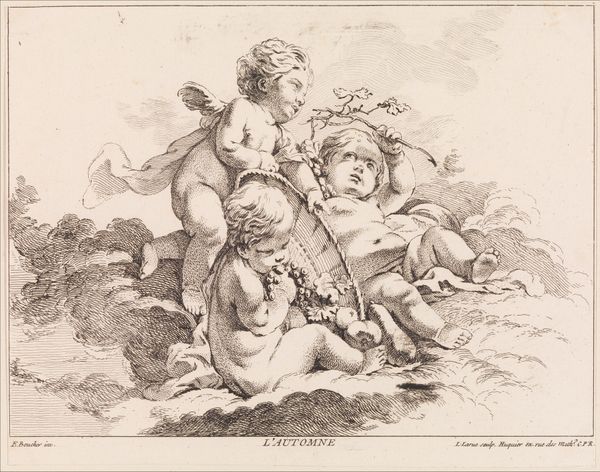
Dimensions: height 217 mm, width 206 mm
Copyright: Rijks Museum: Open Domain
Editor: This drawing by Jean Baptiste Huet, titled "Three Putti with Musical Instruments and Fruit," feels wonderfully light and airy. It's dated between 1755 and 1852. The sepia tones really enhance the playful mood of these cherubic figures. What sort of imagery do you think Huet was hoping to conjure with these playful cherubs? Curator: Well, look at how Huet arranges them: musical instruments, overflowing fruit, chubby, playful children...doesn’t that evoke a sense of abundance and innocence? Throughout the Baroque and Rococo periods, images of putti were frequently deployed to represent joy, prosperity, even divine love. Their seemingly innocent presence served as a constant visual reminder of ideal harmony and the gifts of nature, and the divine. Editor: That makes sense. I'm used to seeing putti in religious contexts, almost like little messengers of God. So their placement with instruments and fruit moves them beyond just simple religious icons? Curator: Precisely! Consider how the musical instruments - the tambourine and flute specifically - relate to festivals and celebration. Now, link that with the bounty of fruit. What message do you perceive? Editor: That the viewer should indulge in and celebrate life? That joy is a spiritual offering in itself? Curator: Precisely. By integrating secular, almost pagan symbols with these cherubic figures, Huet blends sacred and secular desires into an uplifting moment. It serves as a symbolic convergence of human happiness. Editor: It's fascinating to see how seemingly simple images can carry such layers of meaning, weaving together cultural values and artistic traditions. Curator: Indeed. And through that, the enduring appeal of symbols lies in their capacity to both reflect and shape our understanding of the world. They carry immense weight that’s culturally decided over time.
Comments
No comments
Be the first to comment and join the conversation on the ultimate creative platform.


